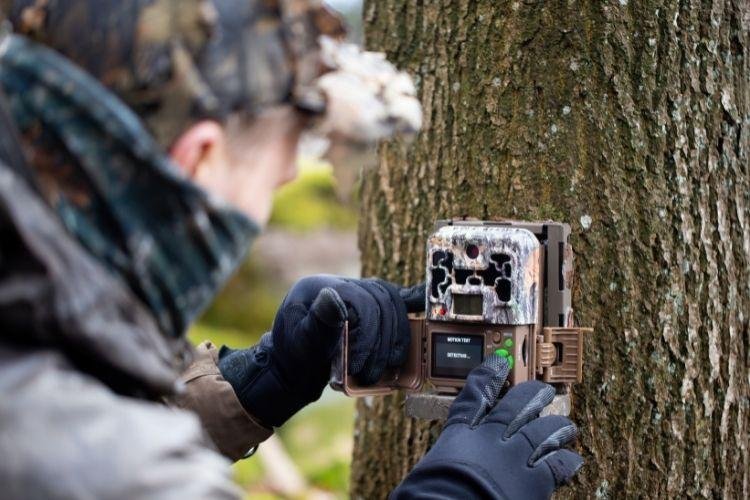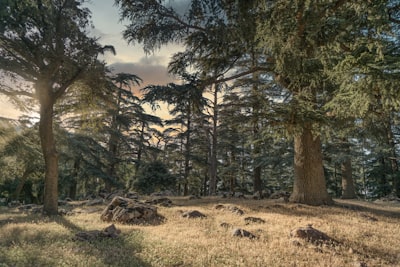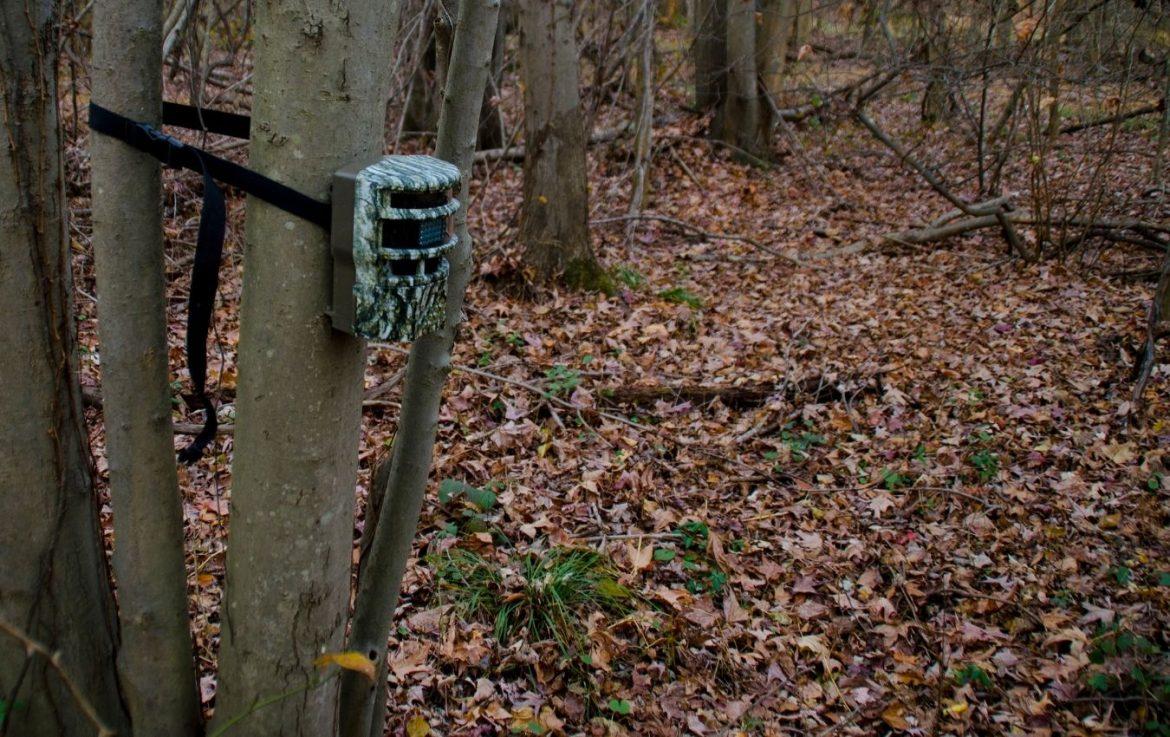Table of Contents
Now that I have private land to hunt on, I’ve been thinking of where to place my 2 cameras and how often to go check them. Should I setup a feeder? A pile of corn? Neither? I will also share some of the best trail cameras for wildlife below.
Deer have a phenomenal sense of smell and going into an area too often will leave behind your stink and can scare off some deer. If you’re trying to get a big buck you need to take all precautions, after all, they didn’t get big because they were dumb. Many only come out after dark and are quick to spook and possibly never return to the area.

I’m a person that wants to see what is going on at my camera. Last year I placed a camera on public land and was a nervous wreck afraid someone would find it and take off with it, I wanted to go back and check not only on the camera but also what it may have captured on a daily basis. I didn’t because of the smell issue, but still went back too often. Now with the private land I’m wondering whether going back once a week to retrieve my cards is ok or if I need to wait longer.
Doing some research I learned more about cellular trail cameras. They use a cellular data card and plan to transmit pictures to an FTP server, email or phone depending on what brand and model you get. You can setup the camera and not have to go back for months at a time! No more disturbing the wildlife and if your property is a long drive away, no more wasting gas to check on a camera. You will have a monthly fee from AT&T (the most common one I could find) but you could save much more than that on gas. But enough talk, let’s see the best trail camera that you can buy right now.
Top 10 Best Trail Cameras of 2024
As technology continuously refines what these game cameras can do, let’s explore the cream of the crop. Here are the top picks that offer the best image quality, longest battery life, and the nifty features that set them apart, be it in the denseness of the woods or the open public land.
1. Reconyx HyperFire 2
It’s no surprise to find a Reconyx model leading the pack. Hunters appreciate its second-to-none one-second trigger speed and premium image quality.
With the capacity for both high-resolution color images by day and clear images with no visible flash by night, this camera is a stealth powerhouse. It might strike you as pricey, but you get what you pay for—unrivaled photo quality without startling the game.
Pros:
- Exceptional one-second trigger speed.
- Superior image quality with no visible flash for night shots.
- Durable build quality designed to withstand harsh outdoor conditions.
Cons:
- Higher price point compared to other models.
- Lacks integrated solar panel, which could contribute to longer-term maintenance costs.
2. Tactacam Reveal X
A solid choice for a cellular trail cam that offers reliable wireless connectivity without compromising battery life. It means you’ll be viewing real-time images without frequent trips to change batteries.
But that’s not all; with its integrated solar panel, you’re basically setting up a self-reliant unit in the wild. Combine this with a user-friendly app and unlimited cloud storage, and you’ve got a winner.
Pros:
- Cellular capabilities enable real-time image viewing.
- Integrated solar panel reduces battery replacement.
- User-friendly app and unlimited cloud storage for ease of use.
Cons:
- Solar panel performance may vary depending on location and weather conditions.
- Data plans necessary for cellular features can add to the operating cost.
3. Moultrie Mobile Edge
This camera boasts an advanced cellular camera setup with impressive trigger speeds and a long-range detection area. Its cellular functionality works hand in glove with Moultrie Mobile’s data plans, providing excellent service across various cell networks. You’ll need to balance this with the recurring cost of data plans, but the edge you get on tracking game is substantial.
Pros:
- Excellent trigger speed and extended detection range.
- Versatile with various cell networks and data plans.
- Strong build suitable for different environmental settings.
Cons:
- Requires ongoing data plan expenses.
- The interface may have a steeper learning curve for some users.
4. Stealth Cam DS4K
When resolution is key, and you’re looking to rival the image quality of a professional photographer’s camera, this is your pick. The DS4K delivers 4K video resolution, ensuring the footage in front of the camera is as vivid and clear as nature intended. This model’s only downside is its slower trigger speed, which might make it less ideal for capturing fast-moving targets.
Pros:
- Ultra-high 4K video resolution for professional-quality footage.
- Dual sensor technology for optimized day and night imaging.
Cons:
- Slower trigger speed may miss fast-moving targets.
- Higher resolution means larger file sizes, potentially requiring more frequent SD card management.
5. Spypoint Flex
It’s arguably the best cellular trail camera for those who are setting their sights on a camera that’s as flexible as its name suggests. With variable trigger speeds and cellular adaptability to match the best cell service available, it’s a strong choice for both open areas and more closed settings. The addition of a solar panel can reduce the dependency on AA batteries or a battery pack.
Pros:
- Adaptable trigger speed for different monitoring scenarios.
- Agnostic to cell service providers, picking the best available network.
Cons:
- Can be more expensive upfront due to its advanced features.
- Some hunters might not need such extensive cellular capability for their purposes.
6. Bushnell Core DS
Another fantastic option for those prioritizing battery life. With options to use both lithium batteries for longer-lasting camera performance and alkaline batteries for a quick fix, this camera adapts to your needs. The dual-sensor technology gives you clear images, day and night, though it’s not the fastest on the market when it comes to trigger speed.
Pros:
- Dual battery options cater to either longevity or convenience.
- High-quality images both day and night with dual sensors.
Cons:
- Slower trigger speed may be an issue for capturing fast-moving game.
- Some users might prefer more advanced cellular features.
7. Browning Strike Force Pro XD
With its dual-camera lens technology, you’ll enjoy crystal-clear daytime photos as well as distinctly illuminated night images with its low glow IR flash. It has a commendable trigger speed and a detection range that caters to a variety of landscapes, making it versatile and efficient for almost any seasoned hunter.
Pros:
- Dual-camera lens technology yields excellent photo quality.
- Strong IR flash for night-time use without scaring wildlife.
Cons:
- Battery life may not match up to some other models on this list.
- Lack of cellular connectivity will not suit all users’ needs.
8. Cuddeback Cuddelink Long Range IR
Ideal for managing multiple cameras on a larger tract of public land, this game camera comes with the unique feature of daisy-chaining cameras to one home unit. Your images come back to you in real-time, saving time and legwork. Image quality is respectable, and the network setup adds incredible value, but expect to invest more upfront for the full system.
Pros:
- Ability to link multiple cameras for extensive coverage.
- Impressive battery life and real-time image delivery.
Cons:
- Initial investment is significant when setting up multiple cameras.
- Setup may be complex for those new to using a multiple-camera network.
9. Tactacam Reveal SK
This solar camera brings you peace of mind with its integrated solar panel and built-in lithium battery setup. Although it’s often overshadowed by its sibling, the Reveal X, the SK model holds its own with solid cellular connectivity and reliable photo quality. It might not be your first-time cellular trail cam, but for the environmentally conscious, it’s a top candidate.
Pros:
- Integrated solar panel for ongoing power supply.
- Reliable cellular connectivity with solid photo quality.
Cons:
- Solar panels require sunlight, which might be limited in dense woods.
- The feature set similar to the Reveal X could make choosing between them difficult.
10. Stealth Cam G34 Pro
Rounding out our top picks is the G34 Pro, valued for its dependability and straightforward features. It’s got a respectable trigger speed and offers 34 IR emitters for a fast trigger speed and good nighttime image quality. It doesn’t have cellular capabilities, but for hunters who don’t mind the hands-on approach, it offers great performance for its price point.
Pros:
- Dependable performance with good trigger speed.
- Reasonable price point making it accessible to a wide range of users.
Cons:
- No cellular capabilities, limiting real-time monitoring potential.
- IR emitters may not have the reach of more high-end models.
Buying Guide
When choosing the best trail camera, consider what you value most: Do you need a camera with a solar panel to minimize trips for battery changes? Are you looking for a camera that sends pictures in real time to your phone? Perhaps you don’t need a camera with all the bells and whistles—just clear images to tell you what’s happening in front of your lens.
Whatever your preference, it’s crucial to delve into key features that align with your hunting goals. Here are some essential features to consider:
– Trigger Speed: Fast-moving animals require a quicker trigger to capture the moment. Consider the activity level of your target species.
– Detection Range: How far away can the camera detect motion? This will determine the positioning and effectiveness of capturing wildlife on camera.
– Image Quality: Higher resolution cameras provide clearer images, but remember, more detail means more data storage.
– Night Vision: Low-light or infrared capabilities are a must for nocturnal wildlife tracking.
– Battery Life: Long-lasting batteries reduce the need for frequent visits, vital for not disturbing the habitat.
– Storage Capacity: Ensure sufficient memory either through SD cards or cloud storage to accommodate all captures.
– Cellular vs. Non-Cellular: Weigh the convenience of real-time data against additional costs and potential service issues in remote areas.
– Durability: Ensure your chosen camera can withstand the environmental conditions of your typical hunting ground.
Where to Place Trail Cameras

Finding the perfect spot to place a trail camera is an art in itself—it’s like finding a spot on a river where the fish seem to queue up for your lure. From my jaunts through dappled forests and across windswept prairies, I’ve picked up a few tricks that might just help you frame that perfect wildlife snapshot.
Water Sources
First up, water sources—these are the bustling hubs of animal activity. Whether it’s a burbling brook or a serene pond, critters big and small will make their way here. I’d recommend setting up just off the beaten path leading to the water; you’ll get them in motion, which makes for a dynamic shot.
Trails
Now, trails are a no-brainer, but choosing the right trail is key. Look for paths with recent tracks, and if you’re lucky, droppings or feeding signposts. I remember this one time I lined up my camera along what looked like a deer superhighway. Sure enough, just as dawn touched the sky with pink, a trio rolled in front of my lens and the camera caught their morning saunter in crisp detail.
Natural Choke Points
Don’t overlook natural choke points, either—think of it like positioning yourself at the narrow end of a funnel. These spots guide our four-legged friends into predictable patterns. Once, nestled on a ridge overlooking a narrowing between two brushy areas, my trail camera captured a parade of wildlife I would’ve missed otherwise.
Food Plots And Bait Stations
As for food plots and bait stations, they can be a gold mine. Just remember, the goal is to observe without interfering too much. So, set your camera back a bit and angle it towards the hotspot. You’d be amazed at the activity that unfolds at twilight when creatures big and small think they’re dining in private.
Elevation Matters
Here’s a final tip—don’t overlook elevation. Fixing your camera higher up and tilting it downwards can yield an interesting perspective and evade curious animals that love to sniff and slobber over lenses. Plus, it gives you a bit of a bird’s-eye view, as I discovered one autumn when my cam perched above a hollow caught a bobcat slinking by.
In the end, the best camera placement comes down to knowing your terrain, understanding animal behavior, and a little bit of that hunter’s intuition. Arm yourself with these insights, and you’ll transform your trail cam experience from a passive waiting game to an active wildlife adventure.
Security Tips
Before I wrap up, let’s touch on camera security. It’s one thing placing your camera in the perfect spot, but ensuring it stays there is another. If you’re setting up on public land, camouflage is your best friend. Use brush, bark, and the natural contours of the land to hide your tech wonders from both two-legged and four-legged thieves.
And yeah, let’s be real, we’re attaching some pretty nifty gadgets out there in the wild. Using a cable lock, a security box, or even choosing a camera with GPS tracking can deter or help recover stolen items. It was a lesson learned for me the hard way when I lost a camera to what I suspect was a bear; yep, they do have curious paws. Ever since I invested in a sturdy security box, it’s been smooth sailing—or should I say, smooth spying?
Maintenance and Monitoring
I can’t stress enough the importance of maintaining your trail camera. Check for firmware updates before each season and give it a good clean, focusing on the lens and motion sensors. Batteries are your lifeline out there, so choose quality ones and consider external power sources like solar panels for longer deployments.
Don’t forget, while visiting your camera, minimize your impact. Use scent blockers if you’re targeting especially skittish game like whitetail deer, and vary your approach routes to avoid creating a discernible path straight to your device.
Final Words
Trail cameras are a game-changer for the modern hunter, adding a layer of insight and strategy that our predecessors could only dream of. The right camera, when matched with thoughtful placement and keen observation, can not only enhance your hunting experience but also foster a deeper connection with the natural world.
So strap that camera to a tree, blend into the background, and let the wilderness come to you. Whether you’re after that trophy buck, curious about the nocturnal antics of your local fox family, or simply want to monitor the comings and goings on your property, trail cameras open a window into the fascinating lives of wildlife. Happy hunting!











